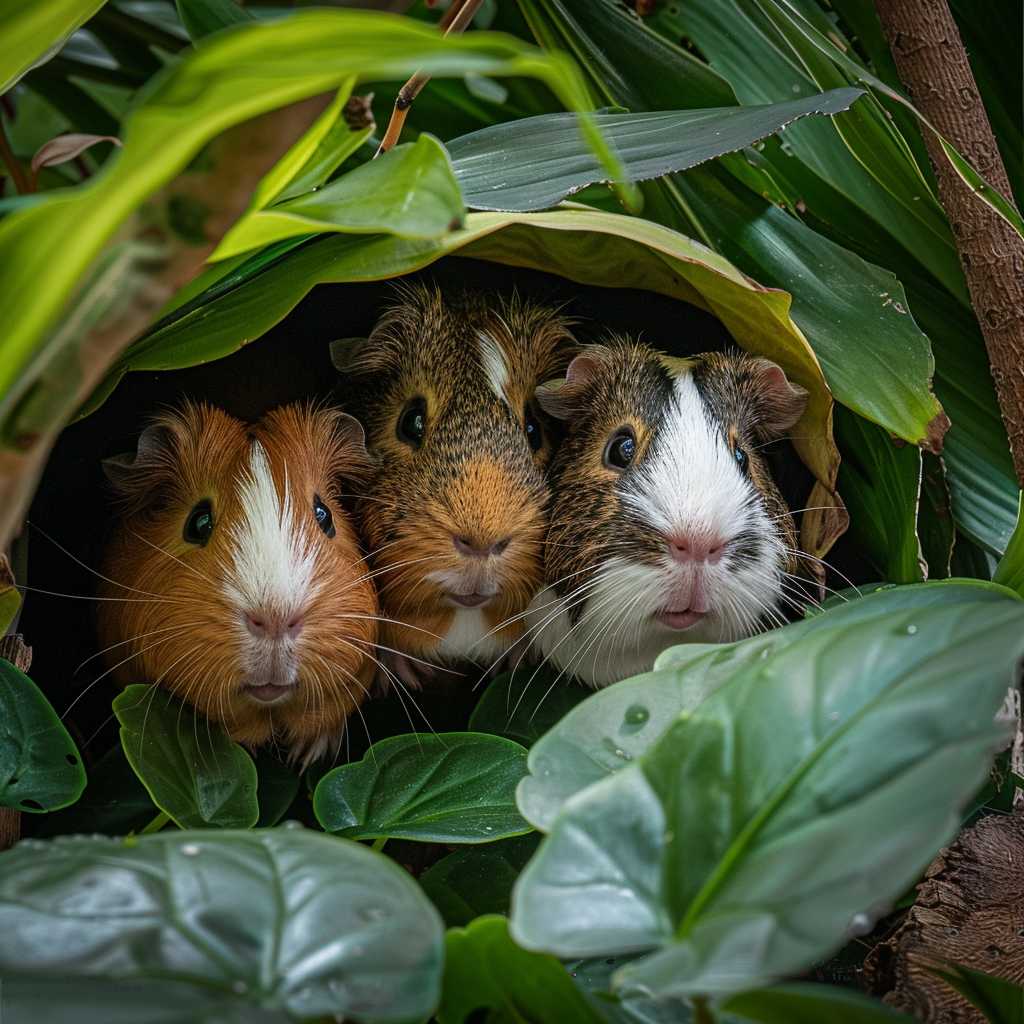The Ultimate Guide to Understanding Guinea Pigs: Nature’s Gentle Companions
Guinea pigs, also known as cavies, have long charmed humans with their docile nature and expressive personalities. Native to the Andean regions of South America, these furry little rodents have transcended their humble beginnings to become one of the world’s favorite pets. This comprehensive guide delves into the various aspects of guinea pigs, from their rich history and biology to the intricacies of their care and the dynamic they bring into the lives of their owners.
Ecological and Historical Overview of Guinea Pigs
Guinea pigs were first domesticated around 5000 BC in the Andean region. Since then, they have been vital to the cultural and dietary customs of indigenous peoples in South America. Surprisingly, the name “guinea pig” is a misnomer as these animals are neither pigs nor are they from Guinea. Their scientific name, Cavia porcellus, hints at this confusion; ‘porcellus’ being Latin for ‘little pig’.
Although originally kept for agricultural reasons, European traders during the 16th century brought guinea pigs across continents, where they swiftly became favored pets. Their gregarious nature made them excellent companions, and they have been embraced by pet enthusiasts ever since.
Biology and Behavioral Traits of Guinea Pigs
Guinea pigs are small, sociable mammals that possess a number of unique physical and behavioral traits. Physically, they are distinguished by their stout bodies, absence of tails, and large heads with expressive whiskers. Adults typically weigh between 700 to 1200 grams.
Behaviorally, these creatures are known for being vocal, using a variety of sounds such as purrs, squeaks, and chirps to communicate with their owners and other guinea pigs. They are also crepuscular, meaning most active during dawn and dusk.
Proper Habitat and Care for Guinea Pigs
Guinea pigs require specific living conditions to thrive. Their habitat should include a spacious cage or enclosure with safe bedding (such as paper or aspen shavings), constant access to fresh water and food, and items like tunnels or hideouts to encourage natural behavior patterns and provide security.
Nutrition is especially important; a diet rich in hay, fresh vegetables, and vitamin C supplements is integral to prevent scurvy – a disease common in guinea pigs due to their inability to synthesize vitamin C.
Apart from housing and dietary needs, regular veterinarian visits for check-ups and nail trimmings play a crucial role in maintaining their health. A stimulating environment with opportunities for playtime and exploration outside their cage is also necessary for their physical and mental well-being.
Behavioral Management: Social Needs and Human Interaction
The social structure of guinea pigs is quite intricate. In the wild, they live in close-knit groups known as herds. Similarly, domestic guinea pigs thrive on companionship. Keeping at least two guinea pigs together can help mimic this social relationship.
Interaction with humans should be approached with sensitivity—gentle handling from an early age can help establish trust. When cared for properly, these animals exhibit endearing behaviors, such as “popcorning,” where they excitedly jump in the air – a sign of happiness.
Guinea Pigs as Educational Tools and Therapy Animals
Beyond simple companionship, guinea pigs serve as excellent educational tools. They can introduce responsibility to young children in care-taking roles or become subjects that bring biological concepts to life for students learning about animal behavior or life sciences.
They are equally acclaimed as therapy animals due to their mild temperament. Studies suggest that interaction with guinea pigs can reduce stress levels in individuals with autism spectrum disorder or in high-pressure environments like workplaces or academic institutions.
Breeding Considerations and Genetic Diversity
Breeding guinea pigs requires knowledge of genetics, thorough planning, and dedication to increase genetic diversity while avoiding health complications associated with inbreeding. Reputable breeders consider factors like genealogy and variety—ranging from smooth-coated breeds to those with hair resembling soft rosettes—to sustainably expand the gene pool.
